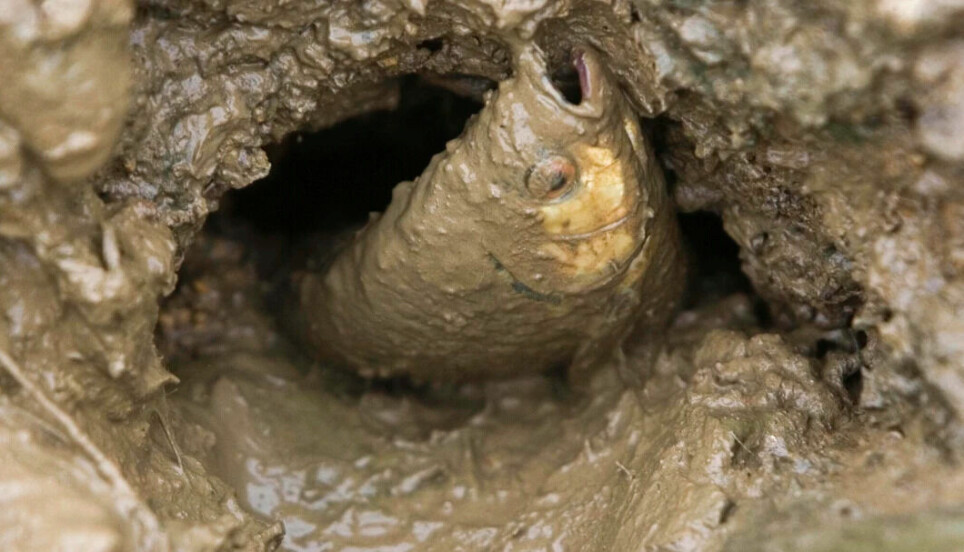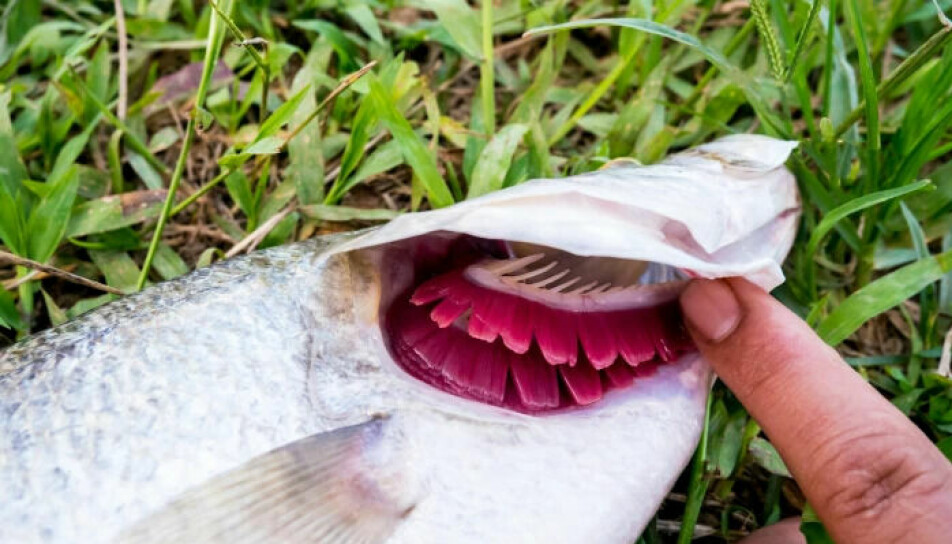
Can fish drown?
ASK A RESEARCHER: Fish can actually drown both on land and in water.
Fish, just like us humans, need oxygen to survive.
While humans and animals on land get oxygen from the air through their lungs, fish get oxygen through their gills.
The gills filter out oxygen from the sea or fresh water.
But there are also fish that obtain oxygen in a different way.
What does drowning entail?
If we end up below the water surface and water enters our lungs, we can drown.
Drowning essentially means that we do not get oxygen into the body, because there is water in the way.
We can survive a drowning if we are able to remove the water from our lungs and get oxygen back into them.
With fish it is the other way around. Fish suffocate after a while if they end up on land.
You've probably seen a fish repeatedly open and close its mouth on land. It looks like it's gasping for air.
At that point, it’s only a matter of time before it suffocates. Slow suffocation is an unpleasant way to die. Fish must be killed as gently as possible.
The best and most gentle way to kill a fish is with a blow to the head before cutting across the gill arches so that it bleeds to death.

Fish can also drown or suffocate in water
But fish can also ‘drown’ in water.
It is perhaps incorrect to say that they drown, since they do not get water in their lungs like mammals do.
It is more correct to say that fish suffocate, but to some extent it is more or less the same thing.
When fish suffocate, they don't get enough oxygen through their gills. They are then no longer able to stay alive.
It is essentially the same as what happens when mammals drown. They cannot extract oxygen from the water and suffocate.
This is the explanation researcher Marco Vindas at the Faculty of Veterinary Medicine at the Norwegian University of Life Sciences (NMBU) gives sciencenorway.no.
Lack of oxygen in the water
Fish can suffocate if there is too little oxygen in the fresh water or sea.
This can happen if the water is polluted or if it is very hot.
“With higher temperatures, less oxygen becomes available to the fish in the water, which can lead to suffocation,” Vindas explains.
But there are differences between fish species. Tropical fish can extract oxygen from water better than a fish that lives in cold water.
Fish can also suffocate if pollution means that there is less oxygen in the water.
Or they can suffocate if they get stuck in a river with too little water and are unable to get to where there is more water.

Some fish have two ways of breathing
Some species of fish can take in oxygen from the air with organs in their mouths or in parts of their intestines, in addition to the oxygen they get through their gills.
This applies, for example, to salmonids and goldfish.
Salmon tend to take in air from the surface to fill up their swim bladder which they use to keep from sinking. But they can also use oxygen in the air in the same way. Like a kind of reserve tank.
Eels can absorb oxygen through their skin. They can therefore live on land for days if it is wet and cold.
Some fish also have lungs.
Sharks must swim constantly to avoid sinking
A shark is a fish that does not have a swim bladder. It must therefore swim to avoid sinking.
For most sharks, it is not a problem that they sink when they are not swimming.
They just lay down on the seabed and take a break.
Some of them sleep on the seabed, Claudia Junge said in a previous article on forskning.no (link in Norwegian).
She is a researcher at the Institute of Marine Research and an expert on sharks.
White sharks and tuna suffocate if they stop swimming
But the white shark is one of the species that has to swim all the time in order to avoid suffocation. It must swim because its gills can only absorb oxygen from moving water.
“This is because the white shark is unable to draw water through its gills as other fish species do,” Marco Vindas explains.
It must also swim when it is sleeping – it doesn’t really have a choice.
“The same applies to the whale shark, hammerhead shark and mackerel shark,” he tells sciencenorway.no.
This is also the case for tuna.
“They have to be in constant motion, more or less all the time,” Vindas says.
Some fish also have lungs
There are also fish that have lungs, in addition to gills.
They all live in fresh water, in South America, Central Africa and in Australia. Those in Australia are threatened with extinction.
Their scientific name is dipnoi, which means those who breathe in two ways.
The lungs enable them to take in oxygen from the air when there is low oxygen in the water they live in. Their lungs extend from the gut behind the gills.
African lungfish can actually survive during droughts because they burrow into mud. Here they lie in an indentation and breathe with their lungs.
———
Translated by Alette Bjordal Gjellesvik.
Read the Norwegian version of this article on ung.forskning.no
Sources:
Forskning.no: Ni ting du ikke visste om haien (Nine things you didn't know about sharks), 2018.
Maritime Danmark: Fisk kan godt drukne (Fish can drown), 2013.
Natural History Museum: Lungefisk (Lungfish), 2009.
Norwegian Food Safety Authority: Fritidsfiske og dyrevelferdsloven (Recreational fishing and the Animal Welfare Act), 2015.
































